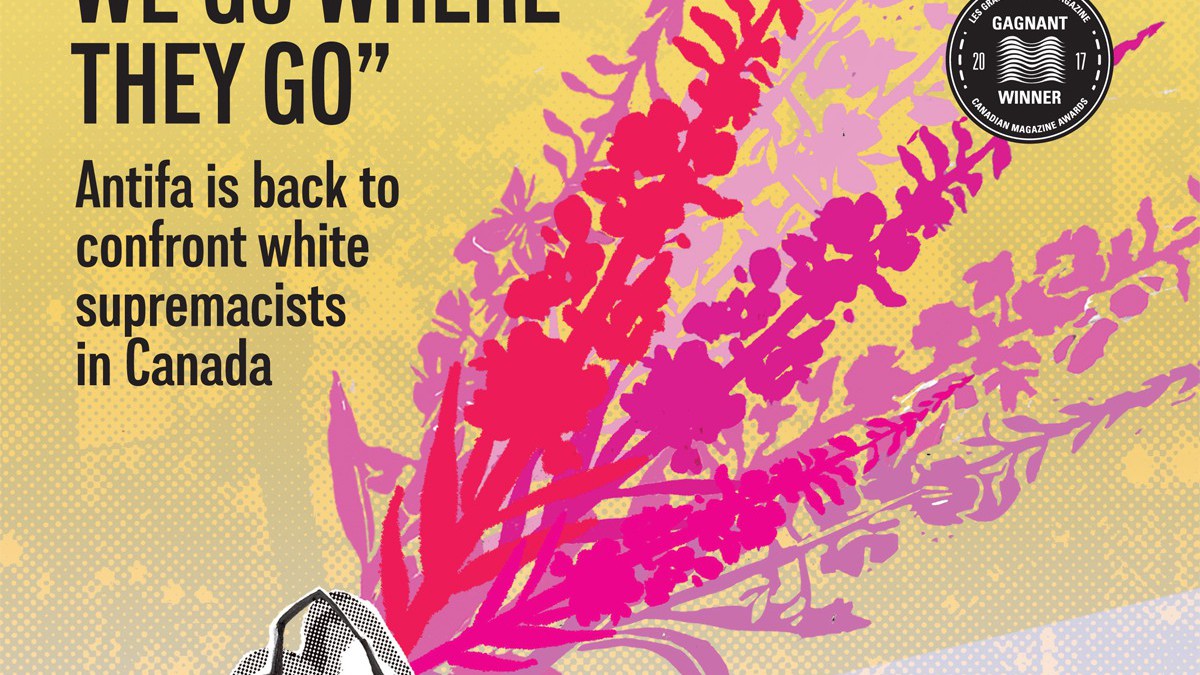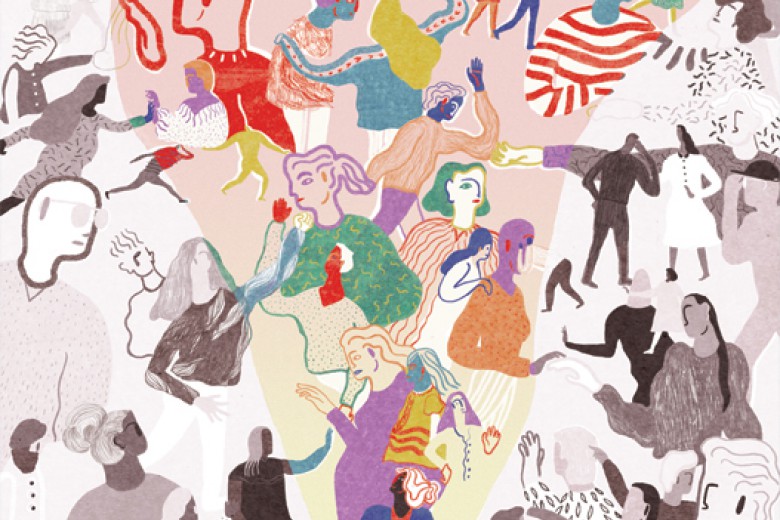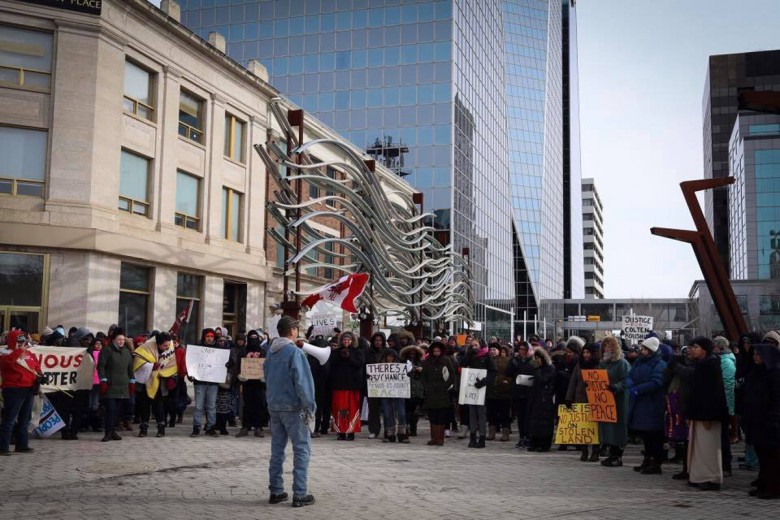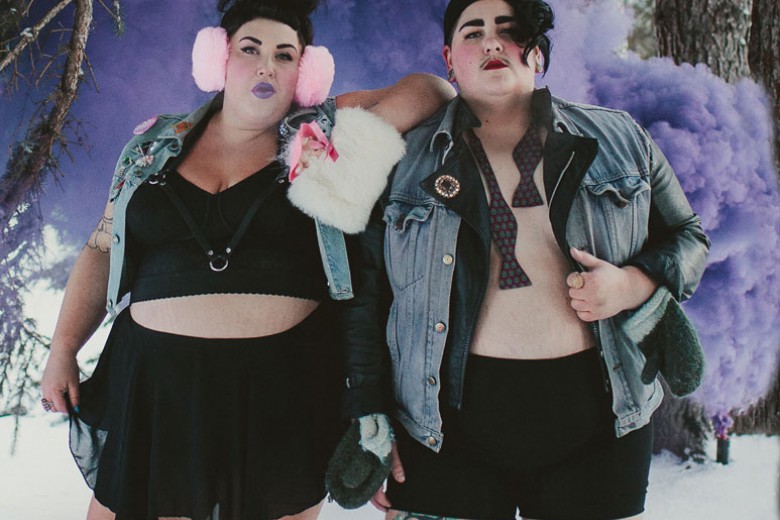The Briarpatch headquarters consist of two rooms in an old house in central Regina. One room is the main working office. It’s small, but it has two desks and just enough space for the equipment required to publish a magazine. With southwest-facing windows, there’s ample natural light – sometimes even too ample when the late-afternoon prairie sunlight floods the room.
The second office is crammed with 45 years of Briarpatch history.
Besides the wall of archived issues dating to the 1970s, the second office houses several boxes packed with political ephemera. There are the clipped political cartoons that puckishly excoriate bosses, and yellowed articles written by contributors for other publications. And then there are the photos of local movement history.
These photos have held my attention for the past year. A few immaculately maintained photos chronicle the 1935 Regina Riot, when workers trekking to Ottawa to demand dignified work were raided by local police and the RCMP. Most of the photos are of protests at the Saskatchewan legislature, solidarity marches, speeches, and strikes. Several have pencilled-in comments on the back, but most are wholly without context, date, or attribution.
In the 1970s, Susan Sontag wrote in On Photography: “Through photographs, the world becomes a series of unrelated, freestanding particles; and history, past and present, a set of anecdotes and faits divers. The camera makes reality atomic, manageable, and opaque. […] The ultimate wisdom of the photographic image is to say: ‘There is the surface. Now think – or rather feel, intuit – what is beyond it, what the reality must be like if it looks this way.’”
While photographs may indeed be atomized slices, that’s not the end of the story (and needless to say, Sontag’s analysis goes much further). When we pull them out of the boxes and back into the community, photographs can relay a sense of continuity. They can show us that we’ve been here before. In the workers of the 1930s, I see the urgency that exists today in workers’ demands for decent work and a $15 minimum wage in the age of austerity. The fire of the speaker with a microphone at an anti-privatization rally in the 1980s is the same flame that fuels today’s anti-cuts rallies.
Poring over the boxes of political photographs in Briarpatch’s archives, I can see that what is beyond the photos is our immediate political life: we’re still undoing the harmful structures of power and privilege in which we’re embedded.
The stories in this issue embody this continuity – the sense that we continue in our struggles. In this issue’s cover story (“Running the Fascists Out of Town – Then and Now,” p. 20), Devin Clancy vividly outlines the past and present of antifascist organizing in Canada – from the fight against Nazis in the 1930s to the work of Anti-Racist Action chapters to demolish white supremacy in the 1990s, to today’s antifa showing up to counter-protest rallying proto-fascists and racists. “Today’s antifascist activists,” Clancy writes, “draw upon decades of experience fighting the far right.” Antifascist organizing tends to be reactionary, reanimating in response to a rise in fascism, ebbing and flowing in response to racist tides. We are again in a moment that requires this effort.
Briarpatch’s climate change fellow Laura Stewart travels to southeast Saskatchewan to contextualize residents’ doubts about climate change (“Saskatchewan’s Earthbound Climate Action,” p. 26). She writes about echoes of the 1970s, when the federal government’s restructuring of the extraction industry kept domestic oil prices so low that “a popular bumper sticker summed up the local sentiment about Trudeau’s 1980 National Energy Program by saying, ‘Let the eastern bastards freeze in the dark.’” Jane Kirby writes about the status of reproductive justice 30 years after the Morgentaler decision (“A Broad Vision for Reproductive Justice,” p. 16), arguing that “[e]nduring barriers, including a lack of funding and providers, together with ongoing oppression and colonialism, have impacted people’s experiences of reproductive rights and exposed the limitations of these legal victories in assuring our full reproductive options.” And in an excerpt from Seven Fallen Feathers (“Racism, Death, and Hard Truths in a Northern City,” p. 30), Tanya Talaga shows how the deaths of Indigenous students in Thunder Bay are linked to long-standing colonial dispossession and rampant institutional racism.
Many of the stories in this issue draw on the long arc of our struggles and the deeply set structures we resist. In doing so, each of these stories help us better understand our contemporary reality. The wisdom of the photos that chronicle these struggles may be that they show the resiliency of communities that continue to organize and create new futures for themselves and others.







